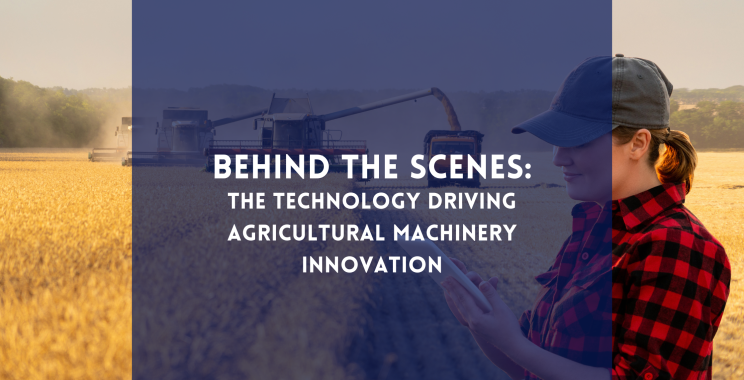Behind the Scenes: The Technology Driving Agricultural Machinery Innovation
In the vast fields and rolling landscapes where agriculture thrives, a quiet revolution is underway. Behind the scenes of every successful farm operation lies a world of cutting-edge technology that is driving innovation in agricultural machinery. From precision farming to automation, these advancements are reshaping the way we cultivate crops, raise livestock, and manage our land. In this blog post, we’ll delve into the fascinating world of agricultural machinery innovation and explore the technology that powers it.
Precision Agriculture: Maximizing Efficiency and Sustainability
At the heart of agricultural machinery innovation lies the concept of precision agriculture. This approach utilizes advanced technologies such as GPS, sensors, and data analytics to optimize every aspect of farming operations. From planting and irrigation to fertilization and pest management, precision agriculture allows farmers to precisely monitor and manage their fields, resulting in higher yields, lower costs, and reduced environmental impact.
GPS-guided tractors and implements enable farmers to navigate fields with unparalleled accuracy, ensuring precise placement of seeds, fertilizers, and pesticides. This not only maximizes resource use but also minimizes soil compaction and runoff, promoting soil health and conservation. Additionally, data analytics platforms provide valuable insights into crop performance, soil health, and weather patterns, empowering farmers to make data-driven decisions that enhance productivity and sustainability.
Automation: Redefining Efficiency and Labor Management
Automation is another key driver of innovation in agricultural machinery, revolutionizing the way we cultivate crops and manage farm operations. From robotic harvesters to autonomous drones, automation technologies are streamlining labor-intensive tasks and increasing operational efficiency. These machines can perform repetitive tasks with precision and consistency, freeing up human labor for more strategic and value-added activities.
Autonomous tractors and implements are becoming increasingly common on farms worldwide, allowing for round-the-clock operation and precise execution of tasks such as planting, spraying, and harvesting. Meanwhile, drones equipped with sensors and cameras can monitor crops from above, detecting pests, diseases, and nutrient deficiencies with remarkable accuracy. By automating routine tasks and data collection processes, these technologies enable farmers to optimize resource use, reduce labor costs, and improve overall farm productivity.
Robotics: Enhancing Precision and Flexibility
Robotics is playing an increasingly important role in agricultural machinery innovation, offering new capabilities for precision and flexibility in farm operations. Robotic systems can perform a wide range of tasks, from weeding and pruning to sorting and packing, with speed and accuracy unmatched by human labor. These machines can work tirelessly in various conditions, adapting to changing environments and crop needs with ease.
Robotic weeders, for example, use computer vision and machine learning algorithms to identify and remove weeds with surgical precision, reducing the need for herbicides and manual labor. Similarly, robotic arms equipped with sensors and actuators can handle delicate tasks such as fruit picking and packaging, ensuring consistent quality and minimizing damage. By leveraging robotics technology, farmers can achieve higher levels of productivity, efficiency, and quality in their operations.
Internet of Things (IoT): Connecting Farms to the Digital World
The Internet of Things (IoT) is connecting farms to the digital world like never before, enabling real-time monitoring, control, and optimization of agricultural machinery and processes. IoT devices such as sensors, actuators, and smart controllers collect data from farm equipment, soil, crops, and environmental conditions, providing farmers with valuable insights into their operations.
Smart irrigation systems, for example, use soil moisture sensors and weather data to deliver the right amount of water to crops at the right time, optimizing water use and minimizing waste. Meanwhile, predictive maintenance systems analyze equipment performance data to detect potential issues before they cause downtime, enabling proactive maintenance and reducing repair costs. By harnessing the power of IoT technology, farmers can optimize resource use, improve decision-making, and enhance overall farm efficiency and profitability.
Conclusion: Embracing Innovation for a Sustainable Future
As we look to the future of agriculture, technological innovation will continue to drive progress and shape the way we farm. From precision agriculture and automation to robotics and IoT, these advancements are revolutionizing the capabilities of agricultural machinery and enabling farmers to meet the challenges of a rapidly changing world. By embracing innovation and adopting cutting-edge technologies, farmers can enhance productivity, sustainability, and resilience, ensuring a brighter future for generations to come.
Tags: farm machinery, farming, farm tips

